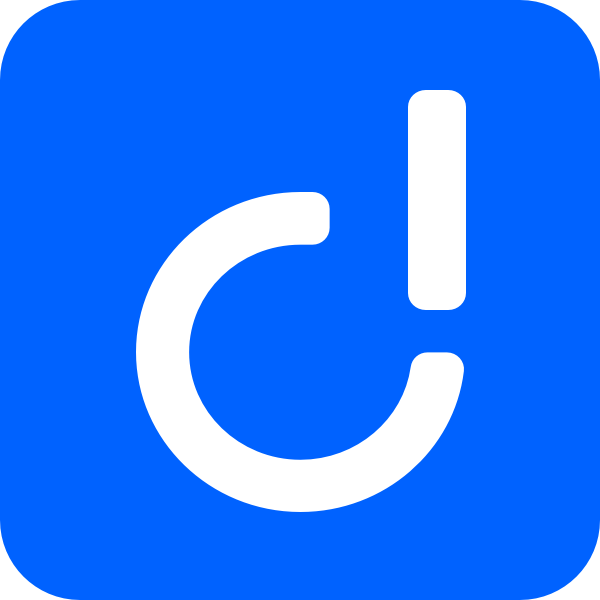What Is Web Design Software?
Web design software is a selection of software tools designed to assist users in building websites.
The technology removes the need for coding and programming knowledge, by allowing users to create sites using drag-and-drop tools, modular components, and simple interfaces. Many platforms come with “visual” design features, which make it easier to track the appearance of a website while you’re making changes to the interface.
While coding knowledge isn’t necessary for most web design software, some solutions do include features to assist users with cleaning up and adjusting code. For instance, you may have access to auto-closing HTML, libraries of code snippets, and documentation. Most tools also feature highly customizable wireframes and templates, so users don’t have to start from scratch.
Web design software tools also allow users to import images and text, size components dynamically for responsive sites, and more. These solutions take the stress and complexity out of designing reactive, beautiful, and engaging websites. It’s also possible to publish a site to a domain directly from a web design tool in most cases.
Why Use Web Design Software: Key Benefits to Consider
Creating a website can be a complex process for beginners. There are various components to consider, including coding, UI/UX design, functionality, and graphical elements. In the past, companies were reliant on designers with programming skills to build websites on their behalf. However, with web design software, anyone can create a website without prior knowledge.
Web design tools provide an easier way for businesses and individuals to create their own presence online. You can construct optimized websites using modular components, without having to worry about coding for responsivity and dynamic pages. Some of the key benefits of web design software include:
-
Ease of Use For Non-Technical Users: Web design software is built to make creating your own website as quick and simple as possible. There’s no requirement for any technical or coding knowledge to get started. Instead, you can simply drag-and-drop various elements into place, or access existing snippets of code. Non-technical users can create advanced sites with multiple functions without having to learn how to navigate a codebase. Some software solutions also provide tutorials, coding shortcuts, and other resources for assistance.
-
Faster Time To Production: Traditional web design requires extensive wireframing, UI/UX design, and coding to bring a site to life. With a web design software, everything you need is already built into one platform. You can access ready-made modules and tools to make creating your site as fast and simple as possible. This often means companies can create and publish their websites in a matter of days, rather than weeks or months. Some tools also allow various users to collaborate on a design at the same time, allowing for less back-and-forth between designers, developers, and business leaders.
-
Ready-Made Components and Templates: Web design software comes with everything you need to build your website already packaged in. Companies can easily access widgets, modules, and apps for adding new functionality to their site. For instance, you can add ecommerce checkout pages, forms, and CTA buttons within a couple of clicks. Users also don’t need to start with a blank page. Most web design software offers a range of pre-built templates to choose from, giving users a convenient jumping-off point.
-
Responsive Layouts: To succeed in today’s digital world, companies need to ensure their site performs exceptionally well on all devices. In the past, this might have meant creating different code for different types of sites. With web design software, the components required for building a responsive site are already built-in. Users can often test the dynamic nature of their creation using previews within the platform. It may also be possible to adjust and customize mobile versions of websites separately to the main site.
Who Uses Web Design Software
Web design software has grown increasingly popular among all kinds of digital professionals. Some tools are custom-made to give more experienced designers and coders complete freedom to create complex applications and sites. Other tools are focused on a non-technical audience, allowing them to create websites without any prior knowledge. In all cases, these tools can help to accelerate the web design process, and reduce complexity for users.
Some of the key people who use web design software include:
-
Web Designers: Anyone involved with “front-end” design for a website or application is defined as a web designer. These people are responsible for building and optimizing the interface users access when using a digital service. Most web designers leverage web design tools to simplify the process of creating mock-ups, outlines, and potential templates for websites. They use their software to plan the navigation of the website, and visualize what the overall experience is going to look like, before collaborating with web developers.
-
No-Code Developers: While coding developers usually work alongside web designers to add the code elements to an existing design, no-code developers can bypass this collaboration by creating functionality within a web design tool. Web design software allows no-code developers to quickly access snippets of codes, widgets, apps, and modules to give a website its desired functionality. They can empower a site with forms, checkout tools, and navigation features, without having to implement their own CSS, HTML, and JavaScript.
-
UX/UI Professionals: User Interface and User Experience professionals are responsible for creating the overall experience of an app or website for end users. They can use web design tools to help plan the customer journey and implement important functionality throughout a website. UX and UI professionals can design mock-ups, create front-end-ready web pages, and more, without having to experiment with code. Many UX/UI professionals leverage web design software to accelerate the time-to-market for their creations.
-
Solopreneurs: Solo entrepreneurs, business leaders, and even ecommerce store owners frequently use web design software to bypass the need for professional designers and developers. Many modern sites are created using these web design tools to help companies without a lot of coding knowledge get their creation onto the web as quickly as possible. Because the tools are often designed for simplicity, anyone can use them. However, solopreneurs may occasionally work with developers on custom code changes.
Different Types of Web Design Software
Web design software can come in different formats depending on the goals a user wants to achieve. Typically, these tools fall into two separate categories:
-
Standalone Web Design Software: Standalone web design software is the creative solution companies, developers, and designers use to create the elements of a website or application. These software offerings are used to build wireframes, templates, and graphic elements for the website experience. For instance, Figma, Sketch, and Adobe XD all allow users to experiment with different web design components, using snippets of code, visual editors, and collaboration features to bring team members together.
-
All-In-One Web Design and Website Builder Tools: Most commonly used by business leaders and entrepreneurs attempting to avoid working with a design or development professional, all-in-one tools combine the creative elements of web design, with website building. They allow organizations to build comprehensive websites from scratch, and ensure the right coding is in place to allow the solution to run. Webflow, Squarespace, and Wix are all good examples of all-in-one tools.
Features of Web Design Software
The exact features of any web design software solution will depend on a number of factors, including the type of tool the user chooses, and the brand offering the service. Some solutions are more advanced than others, and may include various unique features, like AI site building assistance, or the ability to collaborate with developers and designers in real-time.
Standard Features
-
Drag and Drop Functionality: Drag and drop tools are among the easiest ways to build a website using visual components. These solutions allow users to simply click on an asset from a selection of modular options, and drag it into the correct place on a website template.
-
Templates: Templates provide companies and designers with ready-made layouts for websites and applications. These components can include different color palettes, built-in applications or widgets, and specific wireframes.
-
Element Libraries: Element libraries are collections of commonly used components for web design, such as forms, CTA buttons, images, and graphs. These elements already include the code required to ensure they work within a website.
-
Collaborative Editing: In many cases, multiple developers, designers, and business leaders will want to work on a website design at the same time. Collaborative editing allows users to log into the application and edit the file simultaneously, from different computers.
Key Features to Look for
-
Cross-Platform Support: Cross-platform support allows users to access the website or creative elements within the design from multiple operating systems and devices. This ensures team members on Mac, Windows, and mobile devices can all access the same features and functionality at the same time.
-
Plugins and Integrations: While many web design tools come with a host of features already built-in, plugins and integrations allow users to extend the functionality of their site. For instance, users may be able to access plugins for content management, eCommerce, form and data collection, or SEO.
-
No Code /Low Code Extensibility: The extensibility of a web design platform ensures businesses can access additional functionality and features for their site whenever necessary. Low-code options allow users to add advanced elements with limited coding knowledge, while no-code options make it easy to develop the site with no background experience.
Important Considerations When Choosing Web Design Software
Various elements may come into play for a company choosing a new web design software. A user may start by considering their own experience and skill set. As some web design solutions come with coding capabilities that allow more advanced users to make specific changes. It’s also worth considering the budget you have for your technology, as some tools are more expensive than others. Some of the important considerations to keep in mind include:
-
Toolset: Different web design solutions have different collections of tools and features to access. Some have advanced libraries of templates, fonts, and common assets, while others offer basic code-editing features and functionality. The exact functionality you need will depend on the type of site you want to create.
-
Ease of Use: Most web design software is built to be as simple and straightforward as possible. However, some options have more of a learning curve than others. Most users will prioritize a streamlined and intuitive user interface, self-closing code options, and real-time preview tools to make web design as convenient as possible.
-
Flexibility: A web design tool needs to be flexible enough to create content for a range of different operating systems and devices. The majority of today’s tools ensure you can create dynamic designs which are responsive for all kinds of technology. A flexible platform will also allow users to make a range of changes and customizations specific to their brand.
-
Good Documentation: Plenty of documentation can be extremely useful for beginners learning how to use a web design tool for the first time. Most solutions come with extensive knowledge centers and FAQ tools. It may also be helpful to look for a community of avid developers and designers already using the tool, who can offer additional help.
Web Design software is frequently connected with a range of other digital tools and solutions intended for the web development process. These solutions can offer similar functionality to web design tools, or enhance the abilities of web design software:
-
Website Builders: In general, most web design software is intended to offer a more robust set of tools and customization options than basic website builders. However, website builders and web design tools can go hand-in-hand. With a website builder, companies can automatically upload their design to the domain of their choice, and leverage a range of templates.
-
Wireframing Software: Typically used for the preliminary structuring and organization of web pages, wireframing software allows users to create potential layouts for web pages, giving guidance to developers and designers. These tools don’t require a lot of background knowledge in programming and coding. However, they also don’t provide the features required to develop a fully functional website or page.
-
Web Content Management Software: Otherwise known as a “CMS”, web content management software are tools that help host and organize the content on a website, including text, images, and audio. Most content management systems also provide access to web hosting services. However, they will not provide the same kind of web development functionality you would expect from web design tools.
-
WYSIWYG Editors: What you see is what you get editors, or WYSIWYG editors are simple visual solutions that provide a drag-and-drop interface for creating digital media, web pages, and applications. They’re similar to website builders but can have some features in common with web design software too. Many can be used to build web pages, but they may not have all the features required for full web development.





















